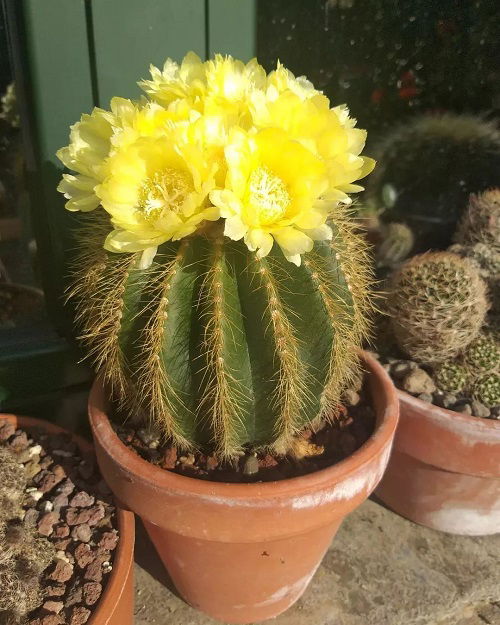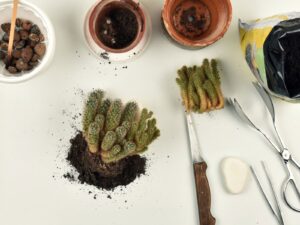Cacti are fascinating succulents that thrive in arid environments, and among their captivating varieties, yellow-flowering cacti stand out as truly unique specimens. While many people associate cacti with the typical greens and reds of desert landscapes, these striking plants can surprise and delight with their vivid yellow blooms. This article delves into the world of cacti with yellow flowers, exploring several species, their characteristics, care requirements, and uses as ornamental plants.
Understanding the allure of yellow-flowering cacti begins with an appreciation of their morphological diversity and remarkable adaptations to desert ecosystems. The juxtaposition of vibrant blooms against the often stark landscape offers an eye-catching spectacle that enhances the aesthetic appeal of any garden. From the spine-covered segments to the intricate floral structures, these cacti exhibit a range of adaptations for survival and reproduction. The stunning yellow flowers serve not only to attract pollinators but also to add visual interest to the surrounding environment.
Some prominent cactus species known for their brilliant yellow flowers include the Golden Barrel Cactus, the Yellow Flowering Claret Cup Cactus, and the Fishhook Barrel Cactus. Each of these species brings its own unique charm and characteristics to the table.
The Golden Barrel Cactus, or Echinocactus grusonii, is a globular cactus that can reach impressive sizes, often forming large, round cushions. The spines are short and can appear golden in color, providing a beautiful contrast to the vibrant yellow flowers that usually bloom in late spring to early summer. This cactus is native to Mexico and is a popular choice in succulent collections due to its enchanting appearance and low maintenance. Ideal for gardens in USDA Zones 9 to 11, the Golden Barrel Cactus thrives in full sun, requiring well-draining soil and minimal water. It is essential to allow the soil to dry completely between watering to prevent rot.
Moving on to the Yellow Flowering Claret Cup Cactus, scientifically known as Echinocereus triglochidiatus, this species is celebrated for its striking red spines and fragrant yellow flowers that attract hummingbirds and bees. The Claret Cup Cactus grows in clumps and can often be found on rocky hillsides and in sandy deserts. The flowers bloom in late spring and can last for several weeks, making them an excellent choice for a focal point in xeriscape gardens. Like many cacti, this species is highly drought-tolerant, thriving in poor soil conditions. Gardeners should ensure full sunlight and minimal watering to mimic its native habitat effectively.
Another noteworthy species is the Fishhook Barrel Cactus, known scientifically as Ferocactus wislizeni. Though often recognized for its signature long, hooked spines, it also produces stunning yellow flowers that can create a glorious display in sumptuously vibrant gardens. The planting zone for the Fishhook Barrel Cactus typically extends from USDA Zones 8 to 11, and it is well-suited to a wide range of climates and soil types. However, to ensure optimal growth, attention must be given to drainage as this cactus prefers dry, sandy soils. Its blooms generally appear in the warmer months, making it a reliable option for adding splashy color to an outdoor setting.
Caring for yellow-flowering cacti involves understanding their requirements for sunlight, soil, and water. Most yellow-flowering cacti thrive in direct sunlight with at least six hours of exposure each day. This sunlight is crucial for photosynthesis and helps the cactus produce the sap needed for healthy blooms. When it comes to soil, it is vital to select a well-draining cactus mix or to create your own blend by combining potting soil with sand or perlite. This ensures that water can drain away efficiently, which is essential for preventing root rot.
Watering practices are equally important. During the growing season (spring to summer), cacti should be watered thoroughly but infrequently, allowing the soil to dry out completely between watering sessions. In the dormant winter period, watering should be significantly reduced or halted altogether, as cacti enter a stage of rest during lower temperatures.
The ornamental uses of yellow-flowering cacti extend beyond their striking aesthetics. These cacti can be excellent choices for both indoor and outdoor environments, particularly in xeriscape gardens designed for water conservation. They serve as appealing accents in rock gardens, borders, and container arrangements. Not only do they fit well into low-water landscapes, but they also require minimal maintenance once established, making them ideal for busy urban gardeners.
Additionally, yellow-flowering cacti can be utilized for educational and decorative purposes. Their unique shapes and blooms provide a captivating subject for photography, while their adaptations can serve as a model for discussing plant resilience in changing climates. Schools and botanical gardens often showcase cacti to teach visitors about the incredible breadth of sustainable and resilient plant life in arid environments.
In conclusion, yellow-flowering cacti offer stunning visual displays while serving practical functions in a garden or landscape. With species like the Golden Barrel Cactus, Yellow Flowering Claret Cup Cactus, and Fishhook Barrel Cactus, enthusiasts can cultivate a diverse and vibrant collection. By understanding their care needs and appreciating their natural beauty, gardeners can successfully incorporate these remarkable plants into their outdoor spaces, creating lush landscapes that flourish even in the harshest conditions.





Leave a Comment